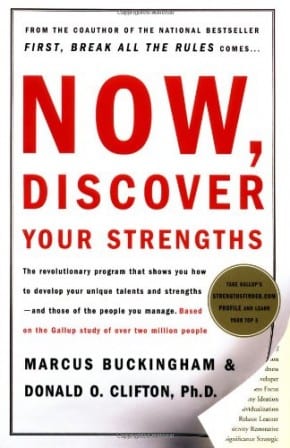I was pleasantly surprised to find out that Facebook COO Sheryl Sandberg considers “Now, Discover Your Strengths” by Marcus Buckingham and Donald O. Clifton the best business book she has read in recent years. Not only that, she recently told The New York Times the book has been “instrumental” in how Facebook manages its employees.
As a CEO I used the strengths-based philosophy and program developed by Buckingham and Clifton to help our employees make the best use of their talents. Their management system is rooted in the question: “Do you have the opportunity to do what you do best every day?”
They believe that as children, students, and employees, we are told to focus on improving our faults and failures to the detriment of our true strengths. Instead, the strengths-based program encourages organizations to help employees find and use their best talents and minimize the time they spend on what they don’t do so well.
Buckingham and Clifton based their “strengths revolution” on two assumptions that they say guide the world’s best managers:
- Each person’s talents are enduring and unique
- Each person’s greatest room for growth is in the areas of his or her greatest strength
As Sandberg said, “…we try to make jobs fit around people rather than make people fit around jobs. We focus on what people’s natural strengths are and spend our management time trying to find ways for them to use those strengths every day.”
Every new employee at my companies received a copy of “Now, Discover Your Strengths.” The book includes a test – the StrengthsFinder Profile – to help employees determine what their strengths are among 34 themes (Learner, Maximizer, Intellection, Activator, etc.). With the employee’s permission, the results were shared with managers and teams to help create an understanding of his or her strengths and how these should best be employed. Knowing everyone’s strengths helped teams work better together.
We also held employee meetings about the strengths-based program where we would show videos of Buckingham describing the philosophy. He stressed the importance and power of focusing on the strengths that bring you energy and not wasting time on those things that bring you down during the day.
In addition, our culture supported employee growth and advancement based on each person’s strengths. If we found that an employee was better suited for a different position than the one he or she was hired for, we would help that employee move into that role even if we had to create it. We would also hire uniquely talent employees even if we didn’t have a ready-made job for them. I didn’t want to pass up on anyone we felt could make a difference.
The strengths-based program has served me well as a CEO, and I hope it still guides the hundreds of employees who honed their strengths while they worked for me. If you haven’t read “Now, Discover Your Strengths” or some of the other Buckingham and Clifton books, I encourage you to do so.
Related article:
Sheryl Sandberg: This Book Defines How Facebook Develops Talent (Business Insider)






Great post, Joel. I LOVE that book! My employee’s thrive when I focus on their strengths.
The approach you outline communicates to employees that they are valuable and valued. The antithesis of this approach, and sadly the one most companies employ, tries to “fix” people. If your readers are stuck in situations like this, read Buckingham and Clifton’s book and Believe, Change and Achieve! http://bit.ly/krrtl5 (There’s not a moment to lose.)